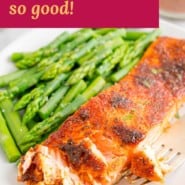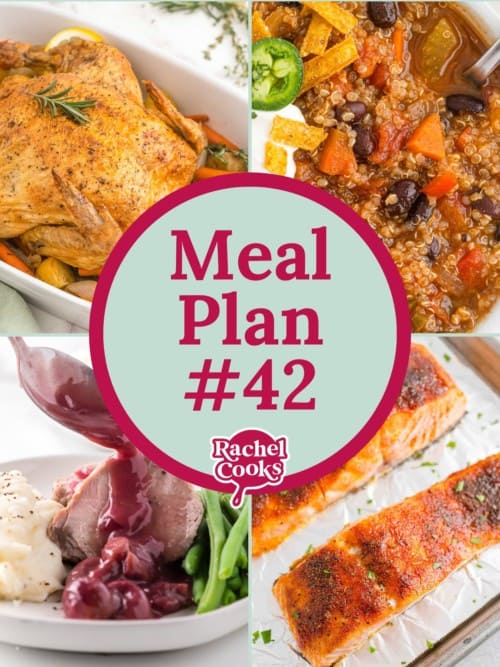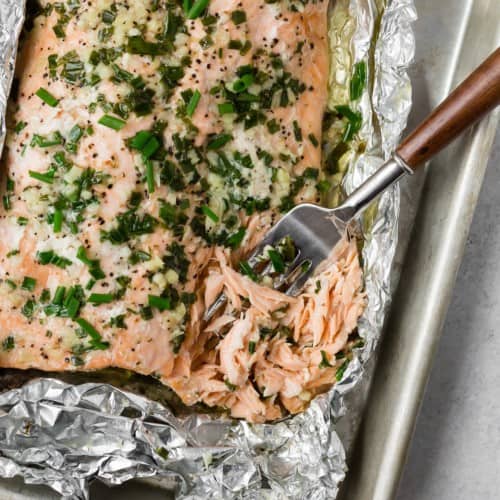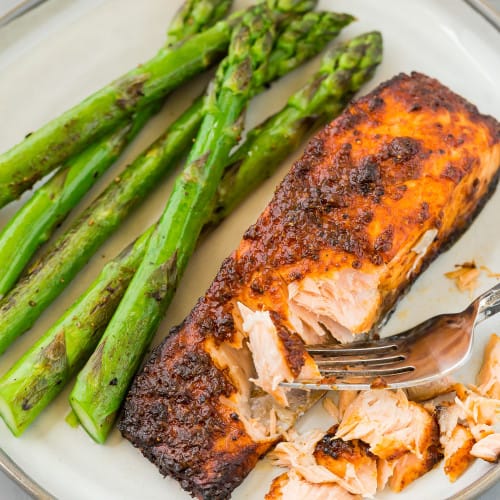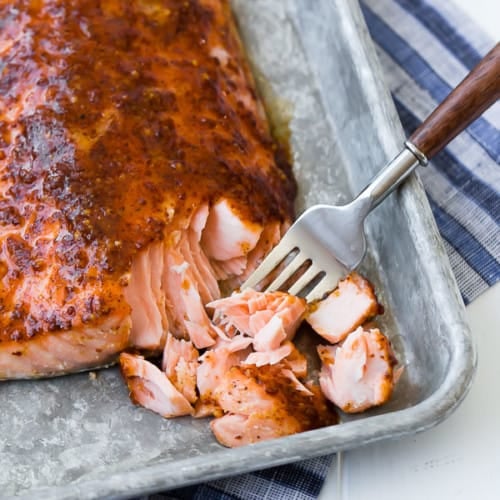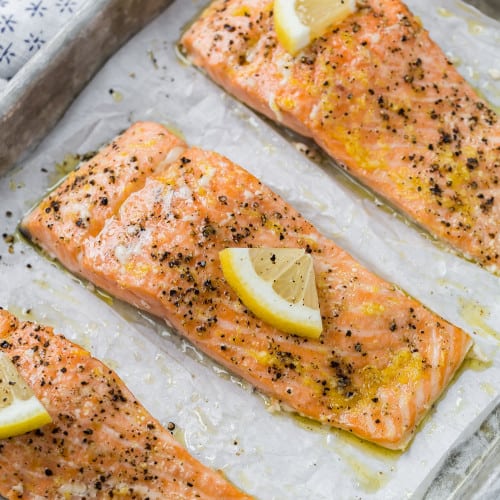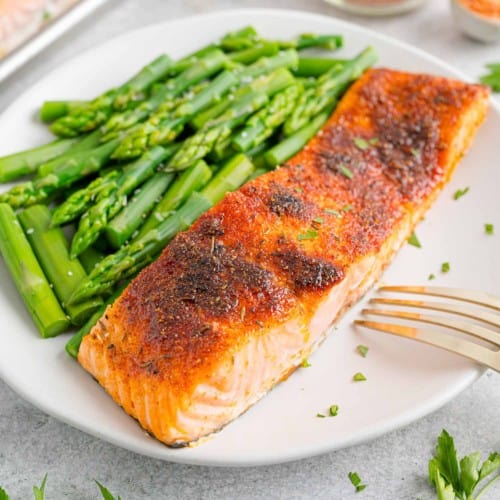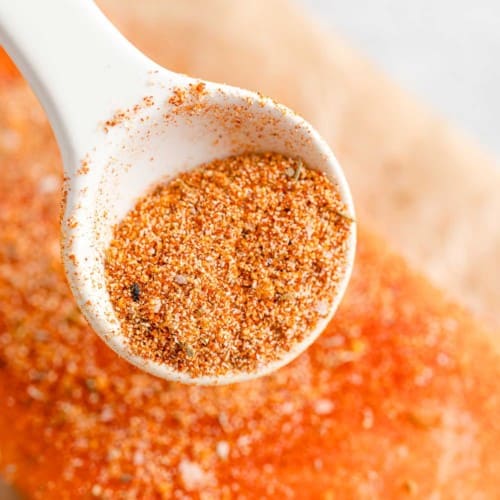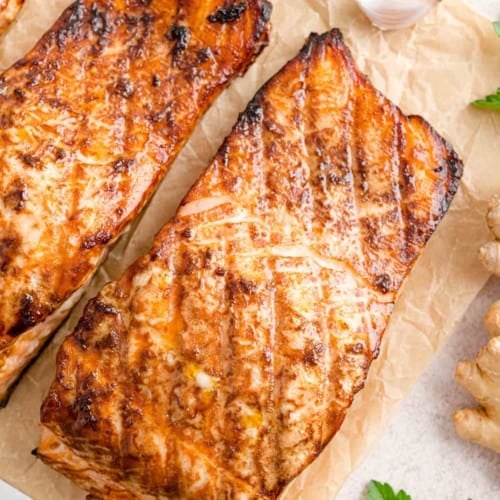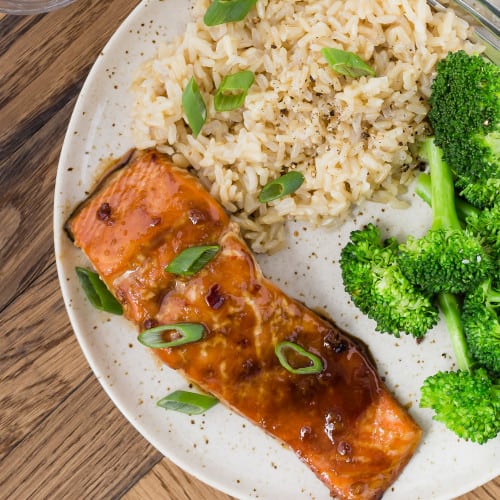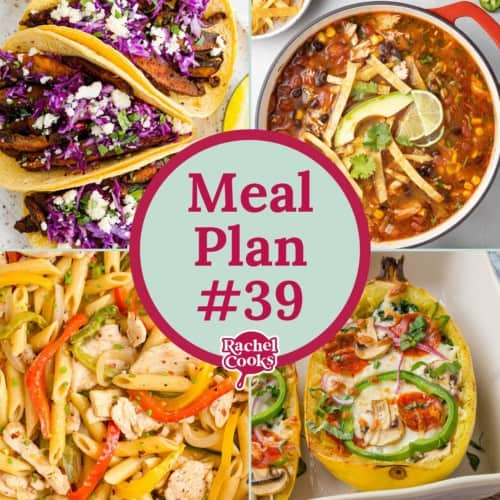Broiled Salmon
This post may contain affiliate links. Please read my disclosure policy.
Quick broiled salmon is crispy on the outside and succulent and juicy on the inside. This is a simple method for cooking salmon filets under the broiler that’s easy to customize, and ready in under 15 minutes!
Recipe Overview
Why you’ll love it: Broiling is the quickest way to cook salmon that turns out deliciously crisp on top and juicy throughout. Perfect for weeknights!
How long it takes: 13 minutes
Equipment you’ll need: oven, a rimmed baking sheet, and foil
Servings: 4 servings
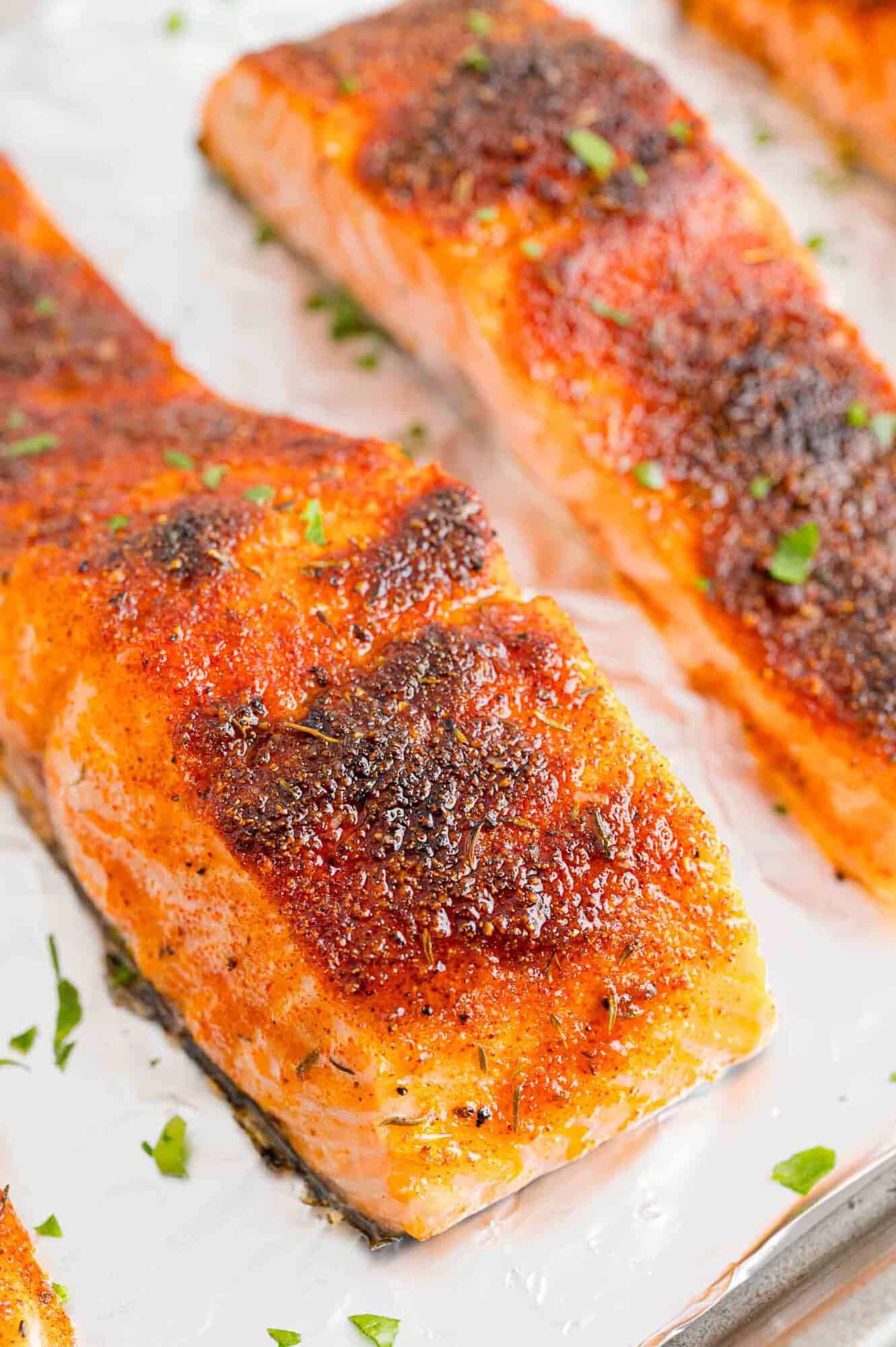
- 1 Recipe Overview
- 2 Easy Broiled Salmon Recipe
- 3 Why You’ll Love Broiled Salmon
- 4 Broiling vs. Baking
- 5 Ingredients You’ll Need
- 6 Skin or No Skin?
- 7 How to Broil Salmon In the Oven
- 8 How Do I Know When Broiled Salmon Is Done?
- 9 Recipe Tips
- 10 Recipe FAQs
- 11 Make This Broiled Salmon Recipe Your Own
- 12 What to Serve With Broiled Salmon
- 13 Storing & Reheating Leftovers
- 14 Leftover Love
- 15 Free Meal Plan
- 16 More Ways to Cook Salmon
- 17 Get the Recipe: Broiled Salmon
Easy Broiled Salmon Recipe
Salmon is one of our favorite proteins, mainly because there are so many delicious ways that you can cook it! Salmon is healthy, flavorful, and perfect for quick dinners, from grilled salmon to baked almond crusted salmon.
Today, I’m going to show you how to make broiled salmon. This easy method for succulent salmon filets is one of my never-fail, fall-back weeknight recipes. I can always count on broiled salmon to turn out crispy and caramelized on top, and perfectly juicy throughout. It’s easy to do in the oven and you can adapt the seasonings any way that you’d like.
Why You’ll Love Broiled Salmon
- Good for you. Salmon is one of the best healthy proteins, with omega-3 fatty acids, B vitamins, and potassium (Healthline). Broiling is a great way to retain all those benefits without much effort.
- Quick and easy. Broiled salmon is a cinch to make. It’s the best method for cooking salmon quickly, as it takes a 6-ounce filet only 6 to 8 minutes to cook under the broiler. The salmon itself turns out juicy and caramelized (especially if you use my salmon seasoning which contains just a bit of brown sugar to enhance the caramelization).
- Versatile. There are so many ways to serve broiled salmon, and lots of ways to customize this simple recipe with marinades, seasonings, sauces, and more. Don’t forget to scroll down for ideas!
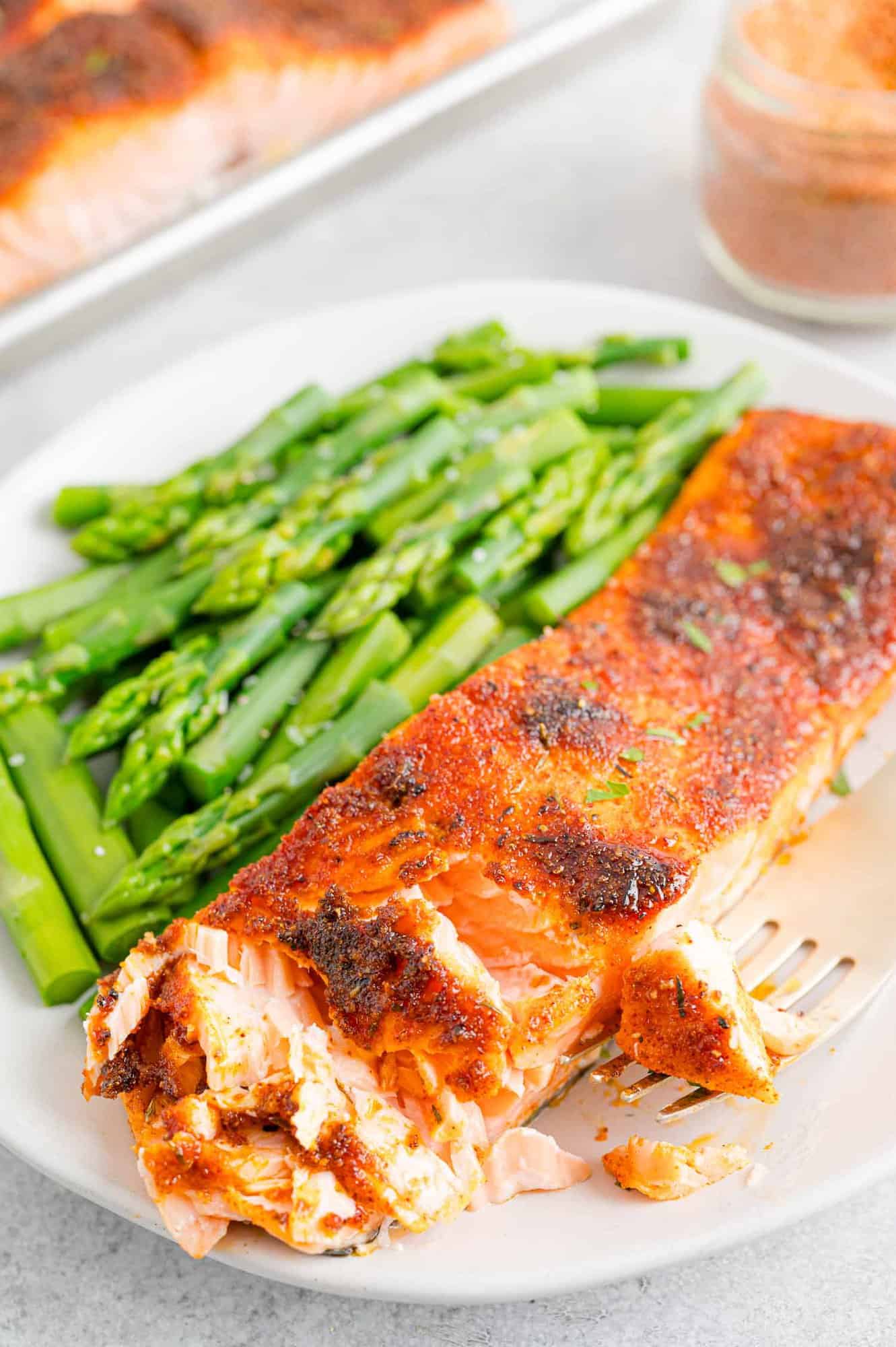
Broiling vs. Baking
In simple terms, broiling is cooking from above. The salmon is positioned higher in the oven, beneath the top heating element. When salmon broils, the heat from the top of your oven caramelizes the sugars, crisping up the top of the salmon. Broiling is also a great way to toast bread, crisp up toppings, melt cheese (over dishes like French onion soup), and cook other thin meats like burgers.
On the other hand, baked salmon is cooked in the middle of the oven, with heat from all sides. It takes slightly longer and baking results in a less crispy top. Both methods are healthy and delicious ways to cook salmon at home.
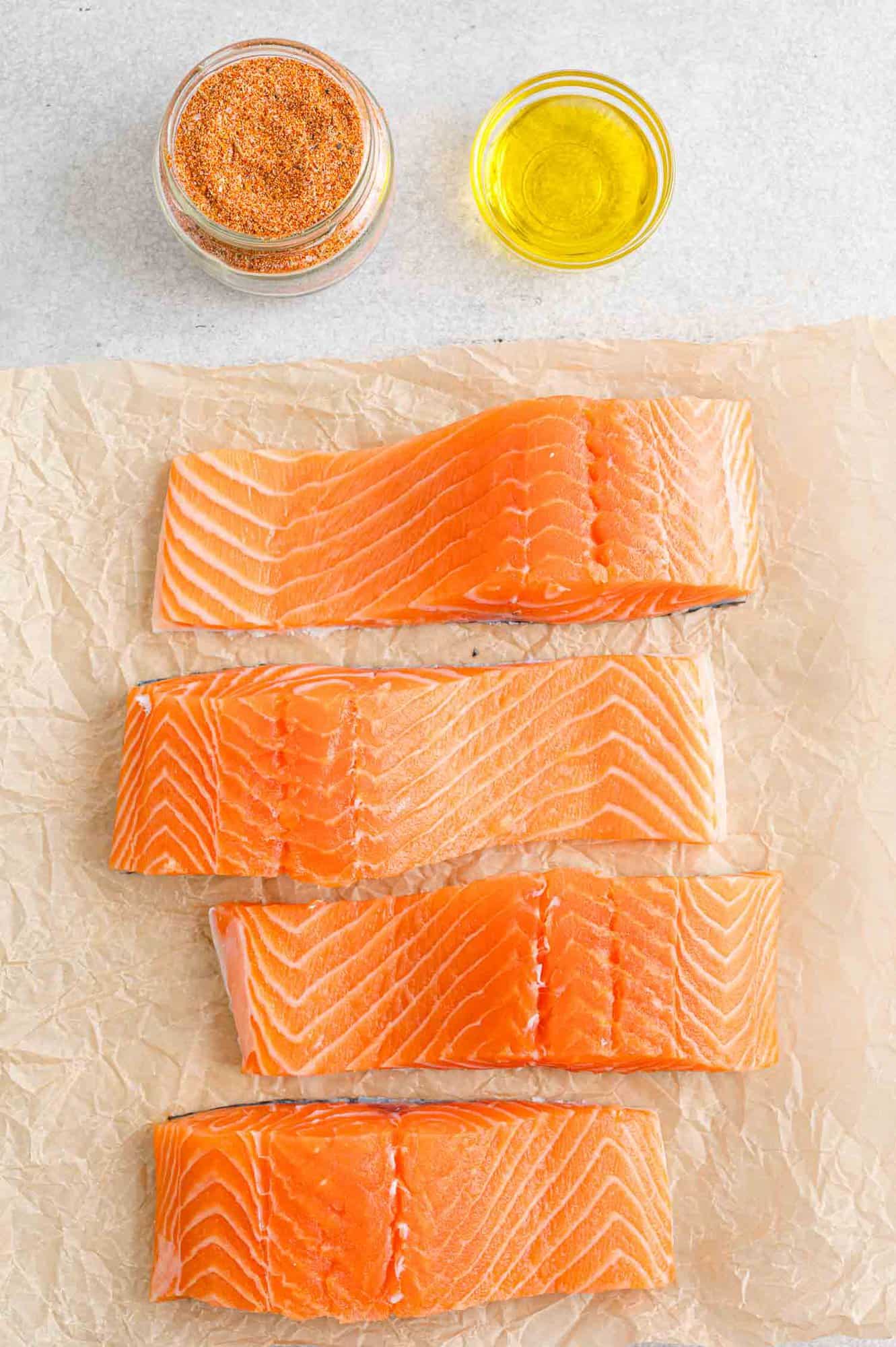
Ingredients You’ll Need
Here I include some notes on what you’ll need. Be sure to scroll to the recipe card below the post for the full amounts, recipe instructions, and nutritional information.
- Salmon – Filets are best, as they’re quick-cooking and have a lot of flavor. I usually buy a whole salmon side and cut it up into 6-ounce filets at home. You can also buy pre-portioned salmon filets or ask your local fish counter to cut them for you.
- Olive Oil – Use good-quality extra virgin olive oil to coat your salmon filets. The oil helps the tops to cook up nice and crisp without burning.
- Seasoning – I use a prepared salmon seasoning blend, but you can season your salmon any way that you’d like. Use your preferred store-bought blend or your own homemade seasoning. See below for ideas.
Skin or No Skin?
I recommend leaving the skins on for broiling salmon. It helps hold the fish together and locks in the moisture to prevent overcooking. In fact, I almost always stick with skin-on salmon when roasting, broiling, baking, grilling, or pan-searing (the only exception is poached salmon!).
Bonus: The salmon will easily separate from the skin once it’s cooked.
How to Broil Salmon In the Oven
Broiling salmon couldn’t be easier. The key is high heat, and keeping a close eye on the salmon while it cooks. Let’s get started:
- Preheat the broiler. Some ovens allow you to set the broiling temperature, while other models come with an existing “broil” option, usually between 500 to 550ºF. Position the oven rack about 6 inches from the top element of your oven, and set it to broil. If needed, adjust the broil temperature to 550ºF.
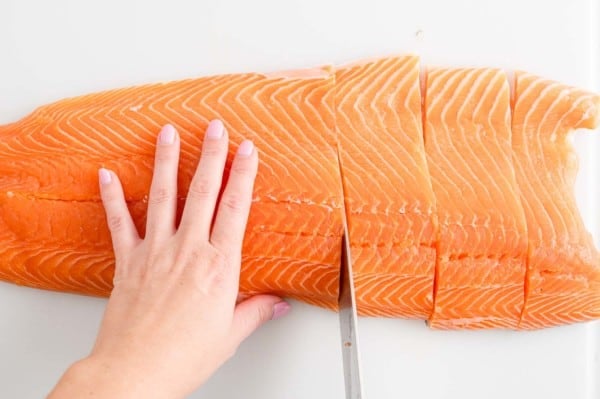

- Prepare the salmon filets. Arrange your salmon filets on a foil-lined baking sheet, then pat them dry with paper towels. Next, give each filet a good, even rub with olive oil. Sprinkle on your seasoning and press it into the fish using your hands.
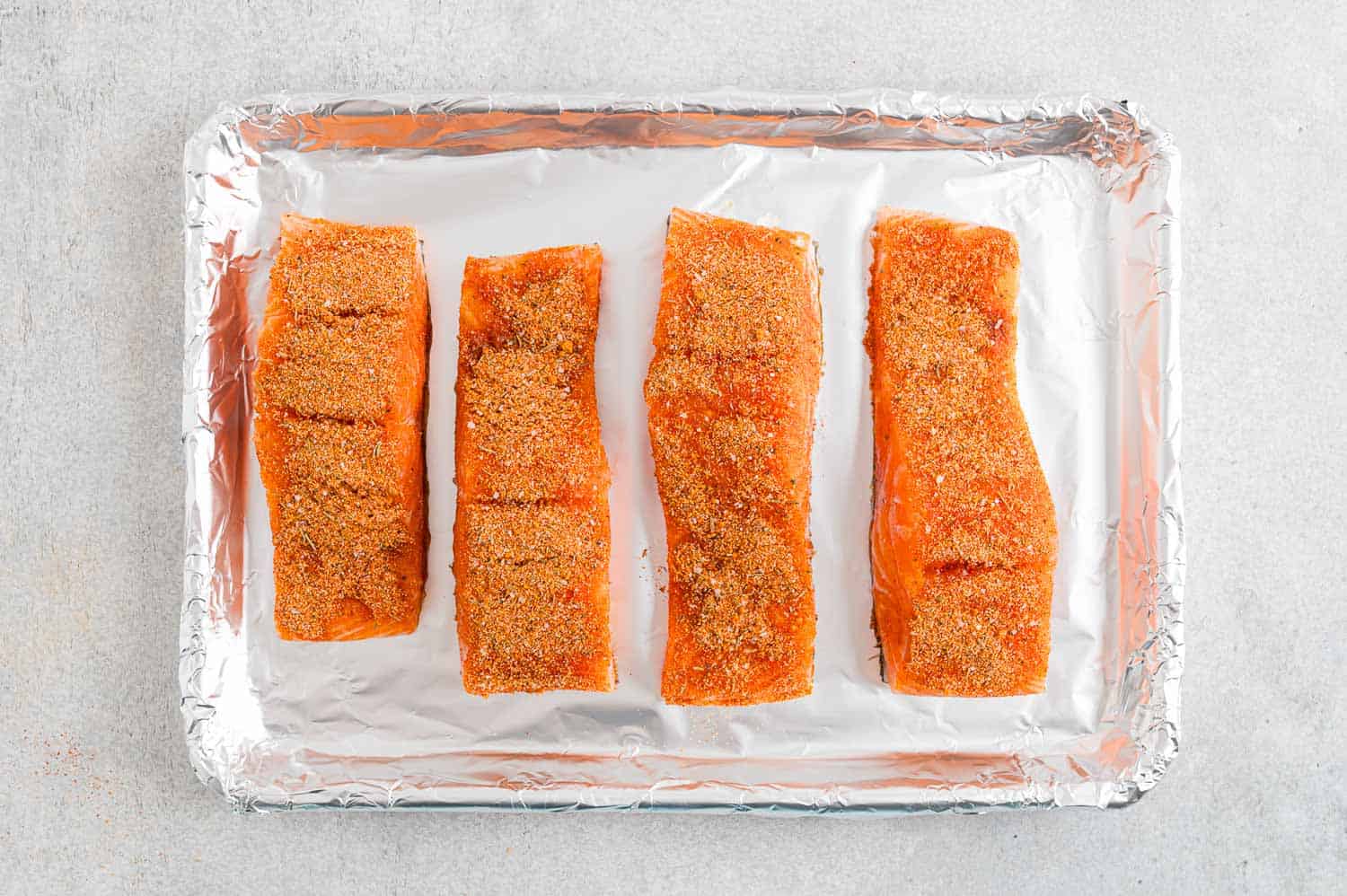
- Broil. Pop your filets under the broiler for 6 to 9 minutes. Keep an eye on the tops of the salmon and take it out when it’s browned and cooked through. Cooking time depends on the thickness of the salmon filets. Afterward, let the salmon rest on the baking sheet for a few minutes before serving. The internal temperature will continue to rise a few degrees.
How Do I Know When Broiled Salmon Is Done?
Broiled salmon is done when the tops of the filets are browned and the salmon is easily flaked with a fork. Another easy way to tell is to take the internal temperature using an instant-read thermometer. According to the USDA, salmon is cooked when it reaches a temperature between 135ºF and 145ºF, depending on how “done” you’d like your salmon to be.
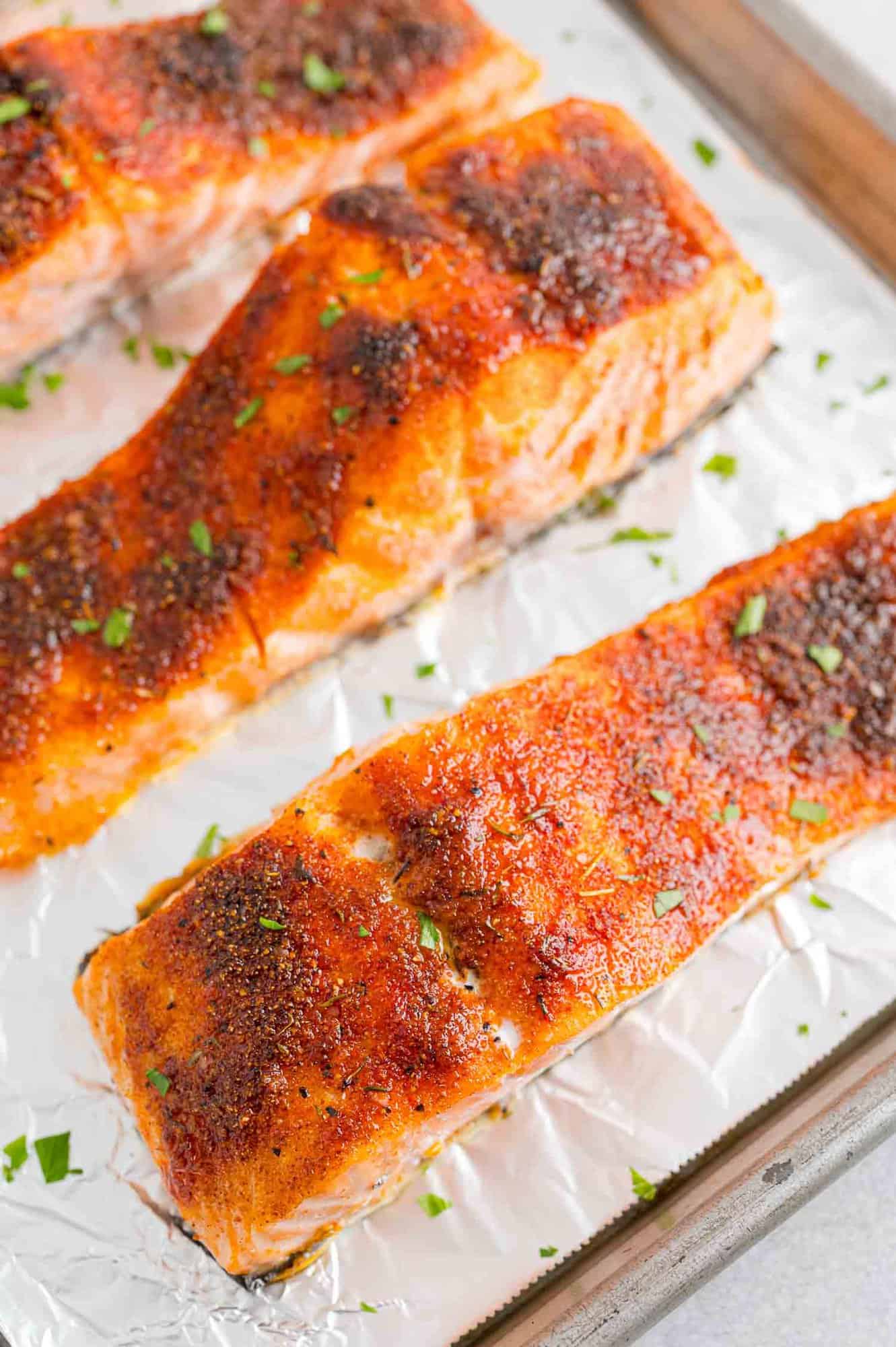
Recipe Tips
Broiling is a wonderful way to bring out the flavors in simple salmon filets. Prepare to be hooked! Here are some final tips for broiling success:
- Keep an eye on your salmon as it cooks. Broiling uses high heat, which means that your salmon can go from underdone to overdone within minutes. Always stay close to the oven while you’re broiling.
- High heat is key to perfectly broiled salmon that’s golden and crispy on top. You can broil salmon using your oven’s broil setting, or, if needed, set the temperature to 500 to 550ºF. If your broiler only goes as high as 450ºF, that’s fine, too.
- If the salmon is browning too quickly, tent the filets with aluminum foil while they finish cooking.
- How long you broil salmon depends on the thickness of your filets, but it usually takes between 6 to 9 minutes at a broiling temperature of 500 to 550ºF.
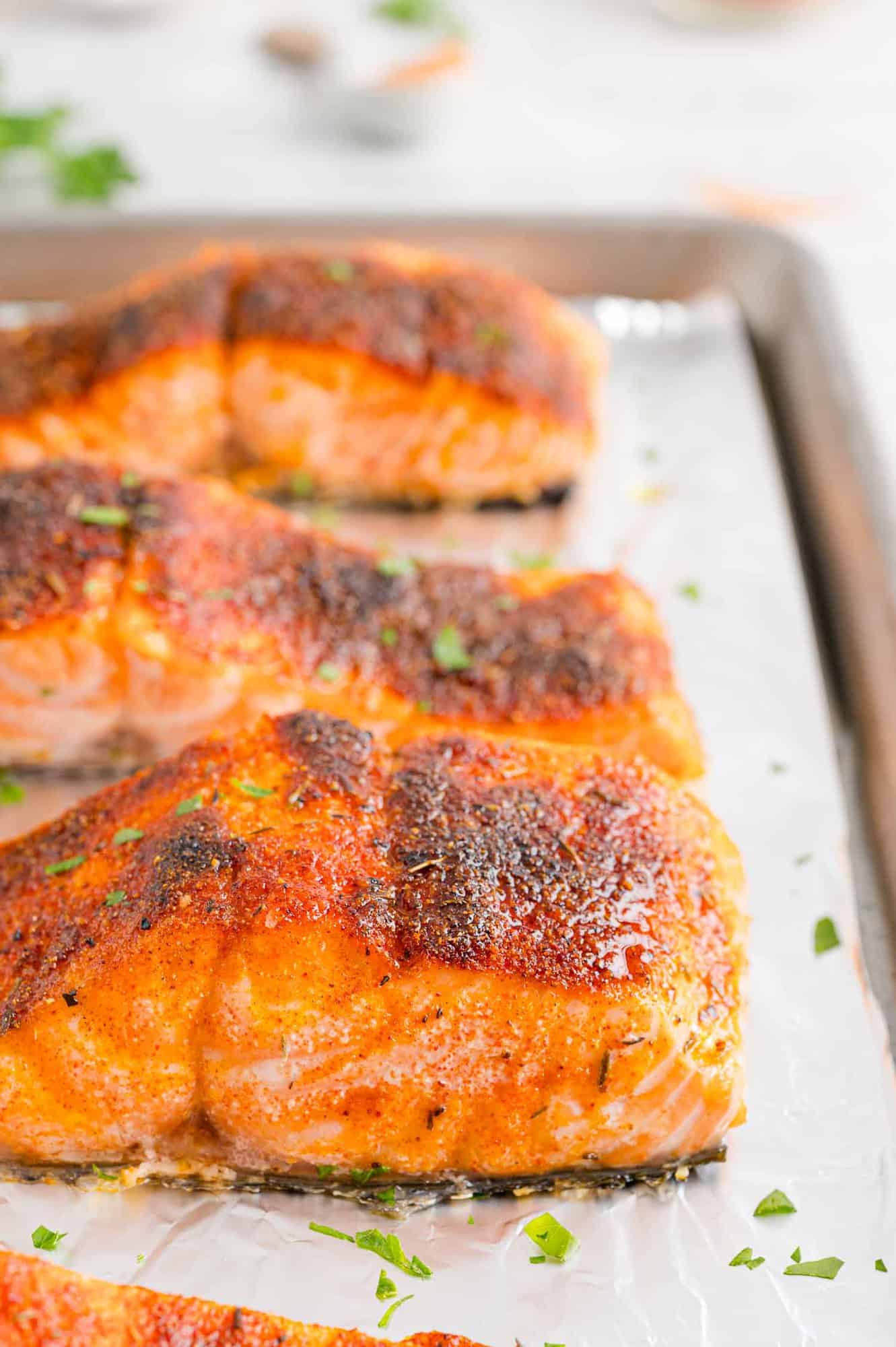
Recipe FAQs
Yes, your broiler will be way more effective if you preheat it first! Give the oven at least 5 to 10 minutes to heat up before you cook your salmon.
I find that broiling is the best choice for quickly cooking salmon in individual portions. If you’re working with a larger portion, it’s better to bake the salmon at 425ºF for longer, to ensure even cooking. You can place baked salmon under the broiler right at the end in order to crisp up the top.
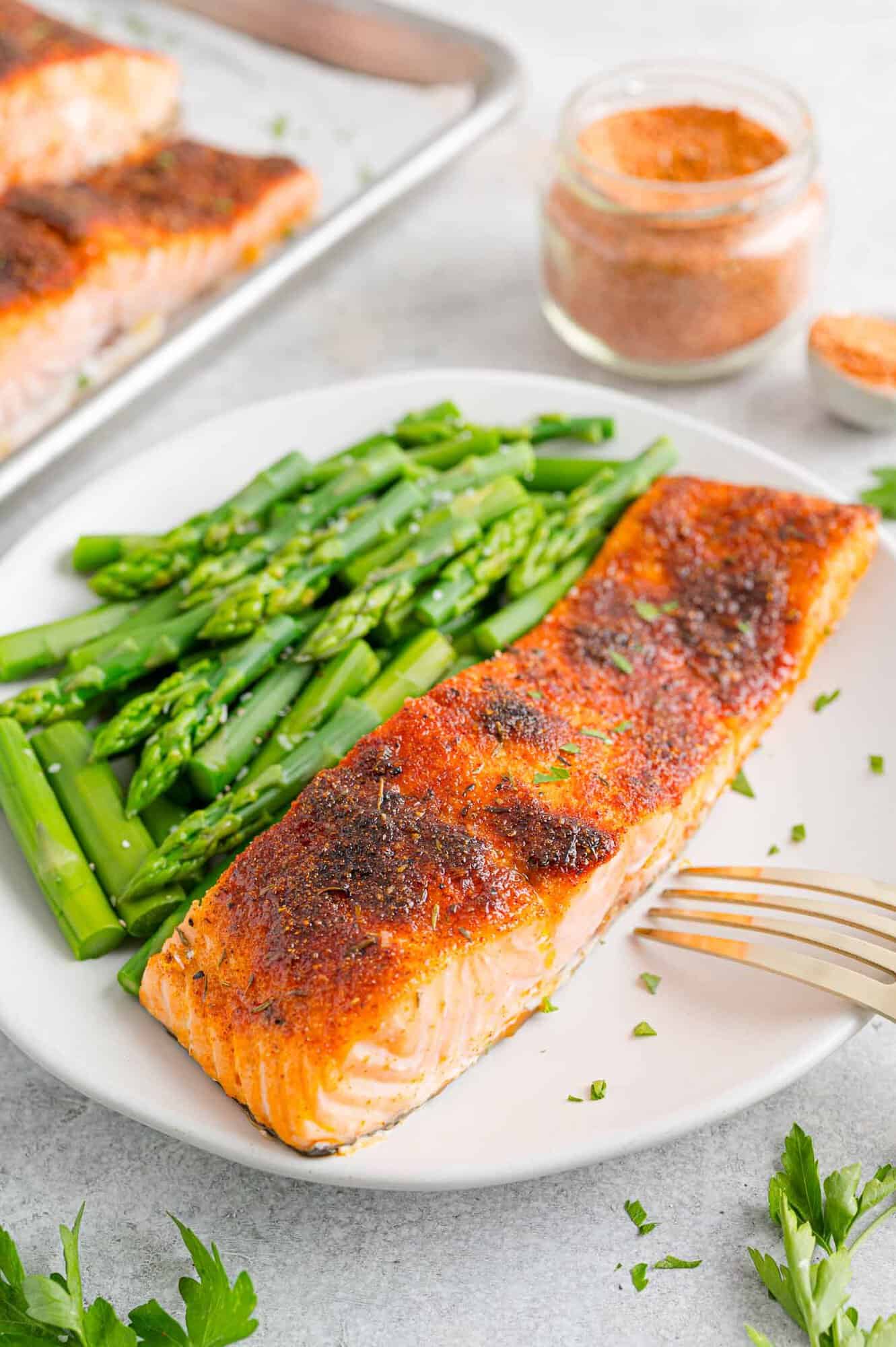
Make This Broiled Salmon Recipe Your Own
The simplicity of this broiled salmon recipe means there’s loads of room to make it your own. Here are some of our favorite variation ideas:
- Keep things simple with a squeeze of fresh lemon juice. Or, borrow the dressing from my baked salmon with lemon.
- Use another seasoning blend, like all-purpose seasoning.
- Use an herb blend, like Herbes de Provence or Italian seasoning, or sprinkle on your choice of dried or fresh herbs.
- For a spicy kick, season your salmon with homemade Cajun seasoning.
- Rub on fajita seasoning to give this salmon a Tex-Mex vibe. You can also add a squeeze of lime and fresh chopped cilantro after broiling.
- For Asian-inspired broiled salmon, make soy glazed salmon or coat your salmon filets in an orange glaze. Broil, and then garnish with green onions and sesame seeds.
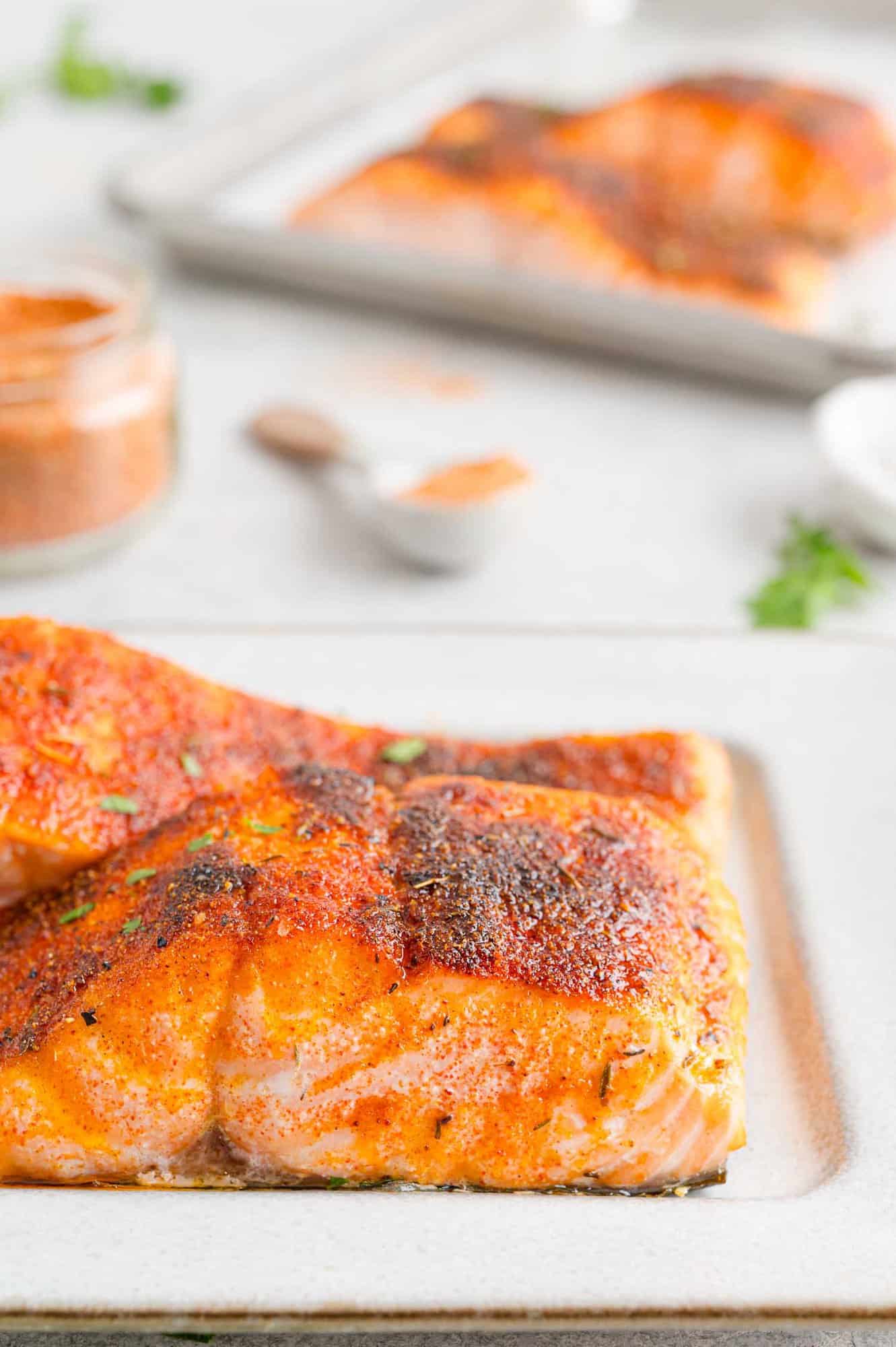
What to Serve With Broiled Salmon
Salmon has become such a weeknight staple in our house, and this recipe is super versatile! We love pairing succulent broiled salmon filets with fresh vegetables for a healthy dinner. Our favorites are roasted green beans, roasted broccoli, or sautéed Brussels sprouts.
Salmon also goes perfectly with a side of Mediterranean green bean salad, panzanella salad, or this crunchy cabbage salad with zesty honey lime dressing.
For a heartier meal, broiled salmon is great to serve with white rice or pasta. Try it with one-pan recipes like this creamy lemon orzo with greens. And, if you feel like jazzing things up a little, flaky salmon is extra luxurious served with an easy mushroom risotto, parmesan potatoes, or homemade polenta.
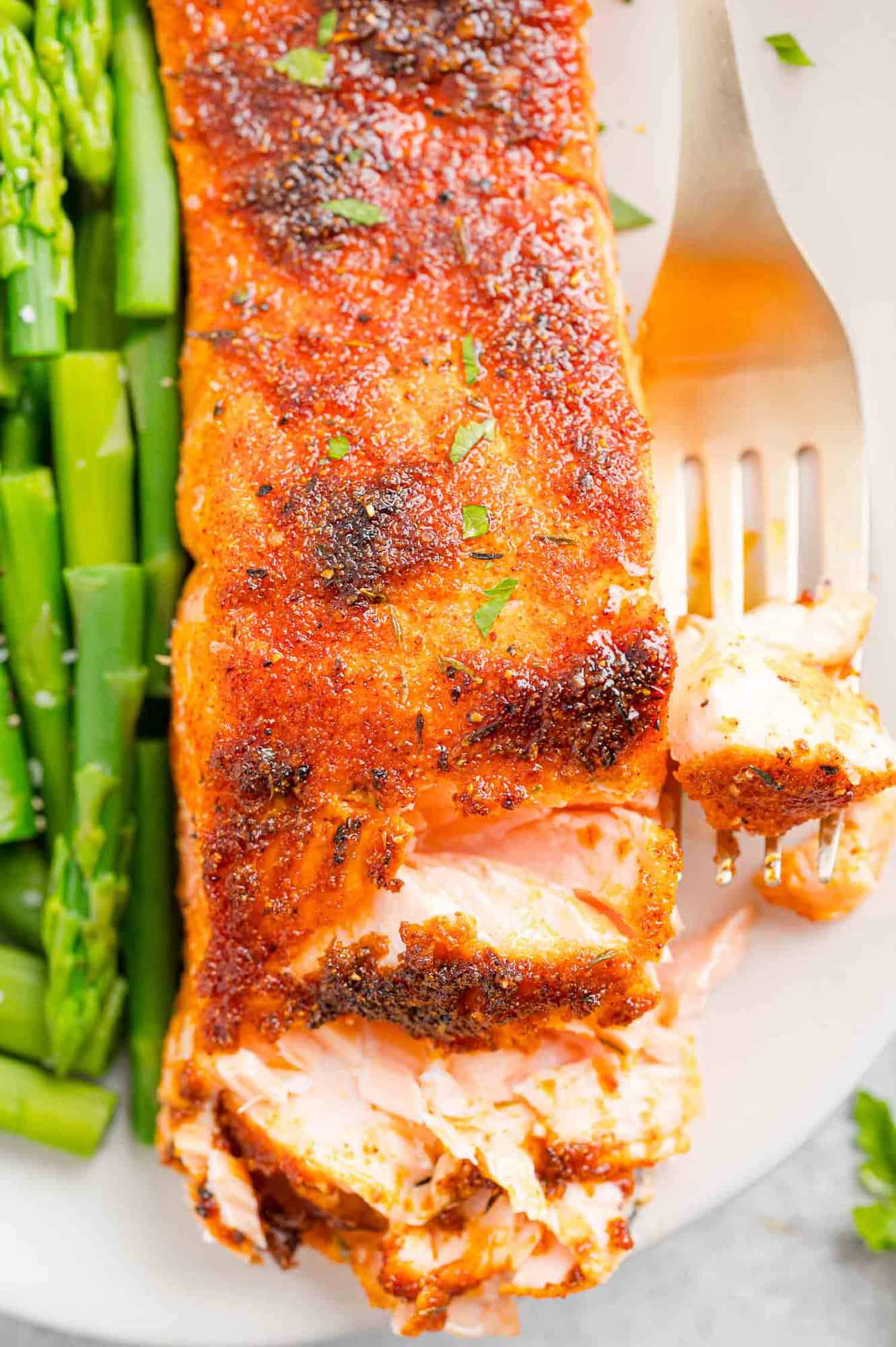
Storing & Reheating Leftovers
- Fridge. Store any leftover broiled salmon covered or in an airtight container in the fridge for up to 2 to 3 days. Leftover salmon is perfect to use in lots of different ways, either cold or reheated (see below). To reheat, place the salmon in a skillet on the stovetop over medium-low heat. You can also use the microwave.
- Freezer. Cooked salmon freezes great. Store your cooled leftover salmon in a freezer safe container and freeze it for up to 3 months. Thaw the salmon in the fridge overnight before reheating.
Leftover Love
Flake your leftover salmon into your favorite pasta recipes (like creamy spaghetti or this cold orzo salad). You can also use leftovers in salmon tacos, wraps, and salads, or add broiled salmon to easy meal prep ideas, like this salmon bowl or a quinoa bowl.
Did you make this? Be sure to leave a review below and tag me @rachelcooksblog on Facebook, Instagram, or Pinterest!
Ingredients
- 4 salmon fillets, about 6 oz. each
- 2 teaspoons olive oil
- 3 tablespoons salmon seasoning (or seasoning of your choice)
Instructions
- Preheat broiler to high with the oven rack about 6 inches away from the heat source.
- Line a baking sheet with foil (parchment paper will burn under the broiler).
- Pat the salmon fillets dry with paper towels.
- Rub the salmon fillets with olive oil and sprinkle with seasoning, patting to adhere.
- Broil the salmon for 6 to 9 minutes, or until the salmon is browned and cooked through (internal temperature of 135ºF to 145ºF, depending on how thick the salmon fillets are and how you like your salmon cooked). Keep an eye on the salmon to prevent it from burning or overcooking. If it’s getting too brown, loosely place foil over the top of the salmon.
- Remove the salmon from the oven and let it rest for 3 to 5 minutes before serving.
Notes
- Storage: Store leftover broiled salmon covered or in an airtight container in the fridge for up to 2 to 3 days. Leftover salmon can be enjoyed either cold or reheated. To reheat, place the salmon in a skillet on the stovetop over medium-low heat. You can also use the microwave.
- To Freeze: Cooked salmon freezes great. Store cooled leftover salmon in a freezer safe container and freeze it for up to 3 months. Thaw the salmon in the fridge overnight before reheating.
- Refer to the post for lots of seasoning ideas.
Nutrition Information
This website provides approximate nutrition information for convenience and as a courtesy only. Nutrition data is gathered primarily from the USDA Food Composition Database, whenever available, or otherwise other online calculators.


